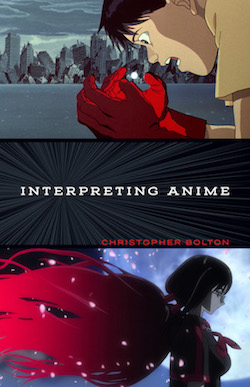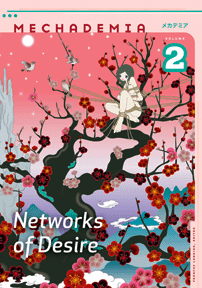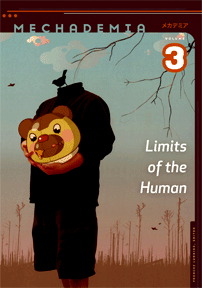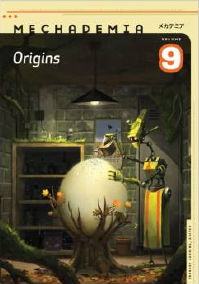This page describes my book projects. For a fuller list of my publications (including articles and book chapters, some translations, and publications in Japanese), see the short CV elsewhere on this site.
by Christopher Bolton (University of Minnesota Press, 2018)
 Interpreting Anime is a study of how to read and interpret Japanese animated film, organized around a series of cross-media comparisons. Each chapter reads a different feature-length anime film, juxtaposes it with a different comparison medium (like prose fiction, manga, drama, or live-action film). These comparisons address the book's central questions: what can anime as a medium do that other media cannot, and how can criticism respond to anime's unique possibilities?
Interpreting Anime is a study of how to read and interpret Japanese animated film, organized around a series of cross-media comparisons. Each chapter reads a different feature-length anime film, juxtaposes it with a different comparison medium (like prose fiction, manga, drama, or live-action film). These comparisons address the book's central questions: what can anime as a medium do that other media cannot, and how can criticism respond to anime's unique possibilities?
These different readings fit together into a broader argument that anime films are experienced differently from other media because the formal qualities of anime move the viewer very rapidly back and forth between two extremes: an emotional or intellectual investment in the story or characters, and a more detached, metafictional consideration of the characters and the film as technological products. The result is an art form that can engage concrete social and political realities at the same time it addresses more abstract issues of how to represent those realities in the first place.
▶ For more detailed information, see︎ the book's web site at interpretinganime.org
Introduction. Read or Die: Reading Anime • 1. From Origin to Oblivion: Akira as Anime and Manga • 2. The Mecha’s Blind Spot: Cinematic and Electronic in Patlabor 2 • 3. Puppet Voices, Cyborg Souls: Ghost in the Shell and Classical Japanese Theater • 4. The Forgetful Phallus and the Otaku’s Third Eye: 3x3 Eyes and Anime’s Audience • 5. Anime in Drag: Stage Performance and Staged Performance in Millennium Actress • 6. The Quick and the Undead: Blood: The Last Vampire and Television Anime • 7. It’s Art, but Is It Anime? Howl’s Moving Castle and the Novel • Conclusion: Summer Wars
by Christopher Bolton (Harvard Asia Center, 2009)
 This is a study of of the Japanese avant-garde writer Abe Kōbō (1924–1993), focusing on the relationship between science and literature within his fiction. Abe achieved an international reputation for his surreal or grotesque brand of fiction, in which the protagonists often find themselves trapped in a world where rationality has failed: they wander lost in literal and figurative urban labyrinths; they are stalked by mysterious doubles who steal their identities; or they metamorphose into animals, plants, and inanimate objects. But these same works also include rigorous scientific elements, with characters, ideas, and highly technical language borrowed from disciplines ranging from organic chemistry and developmental biology to geometry and computer science. This book focuses on Abe's language to argue that the interplay between the "voices" of science and fiction in these novels is the key to unlocking Abe's texts, from his early experiments with science fiction to the more mature psychological novels and films that brought him international acclaim, and finally the complicated experimental works he produced near the end of his career.
This is a study of of the Japanese avant-garde writer Abe Kōbō (1924–1993), focusing on the relationship between science and literature within his fiction. Abe achieved an international reputation for his surreal or grotesque brand of fiction, in which the protagonists often find themselves trapped in a world where rationality has failed: they wander lost in literal and figurative urban labyrinths; they are stalked by mysterious doubles who steal their identities; or they metamorphose into animals, plants, and inanimate objects. But these same works also include rigorous scientific elements, with characters, ideas, and highly technical language borrowed from disciplines ranging from organic chemistry and developmental biology to geometry and computer science. This book focuses on Abe's language to argue that the interplay between the "voices" of science and fiction in these novels is the key to unlocking Abe's texts, from his early experiments with science fiction to the more mature psychological novels and films that brought him international acclaim, and finally the complicated experimental works he produced near the end of his career.
Introduction – Abe Kōbō’s Dictionary • 1. Transforming Science: Metamorphosis in Abe’s Life and Work • 2. Abe’s Essays and Some Historical Distinctions Between Literature and Science • 3. Whirring, Clicking Poetry: Inter Ice Age 4 • 4. The Dialogue of Styles, the Dance of Fiction, and The Face of Another • 5. The Hope of Technology and the Technology of Hope in The Woman in the Dunes • 6. The Parody, Perversity, and Cacophony of Secret Rendezvous • 7. A Technology of Silence: The Ark Sakura and the Nuclear Threat
Edited by Christopher Bolton, Istvan Csicsery-Ronay, Jr., and Tatsumi Takayuki (University of Minnesota Press, 2007)
 Robot Ghosts and Wired Dreams is an introduction to Japanese science fiction—a collection of complementary essays by North American, European, and Japanese critics who treat the successive periods in the development of the genre, as well as examples in different media—starting with the irregular detective fiction of the 1930s and moving through canonical anime films of the 1990s, the advent of digital fiction, and the video game / film crossover Final Fantasy. The chapters also exhibit a range of critical approaches, providing an overview not only of the genre, but also of the field that studies it. The essays are connected by some common theoretical issues and arguments, particularly the relationship and the boundaries between technology and identity—whether it is personal or bodily identity, group or gender identity, or national identity.
Robot Ghosts and Wired Dreams is an introduction to Japanese science fiction—a collection of complementary essays by North American, European, and Japanese critics who treat the successive periods in the development of the genre, as well as examples in different media—starting with the irregular detective fiction of the 1930s and moving through canonical anime films of the 1990s, the advent of digital fiction, and the video game / film crossover Final Fantasy. The chapters also exhibit a range of critical approaches, providing an overview not only of the genre, but also of the field that studies it. The essays are connected by some common theoretical issues and arguments, particularly the relationship and the boundaries between technology and identity—whether it is personal or bodily identity, group or gender identity, or national identity.
In 2024, the Russian publisher Eksmo embarked on a Russian translation of this book.
Edited by Frenchy Lunning (University of Minnesota Press, 2006–2015)
The first arc of Mechademia was an annual volume for critical writing about anime, manga, and related arts, published by the University of Minnesota Press from 2006–2015. I was one of the founders, and a senior editor on these first ten books. (I also authored, co-authored, or translated pieces in a number of volumes.) Each volume included work in a range of disciplines and a variety of formats--from prose articles to critical manga and photo essays--all tied together by a single theme.



Today, the Mechademia series continues with Mechademia: Second Arc, a biannual journal that launched in 2019 with a new editorial board.